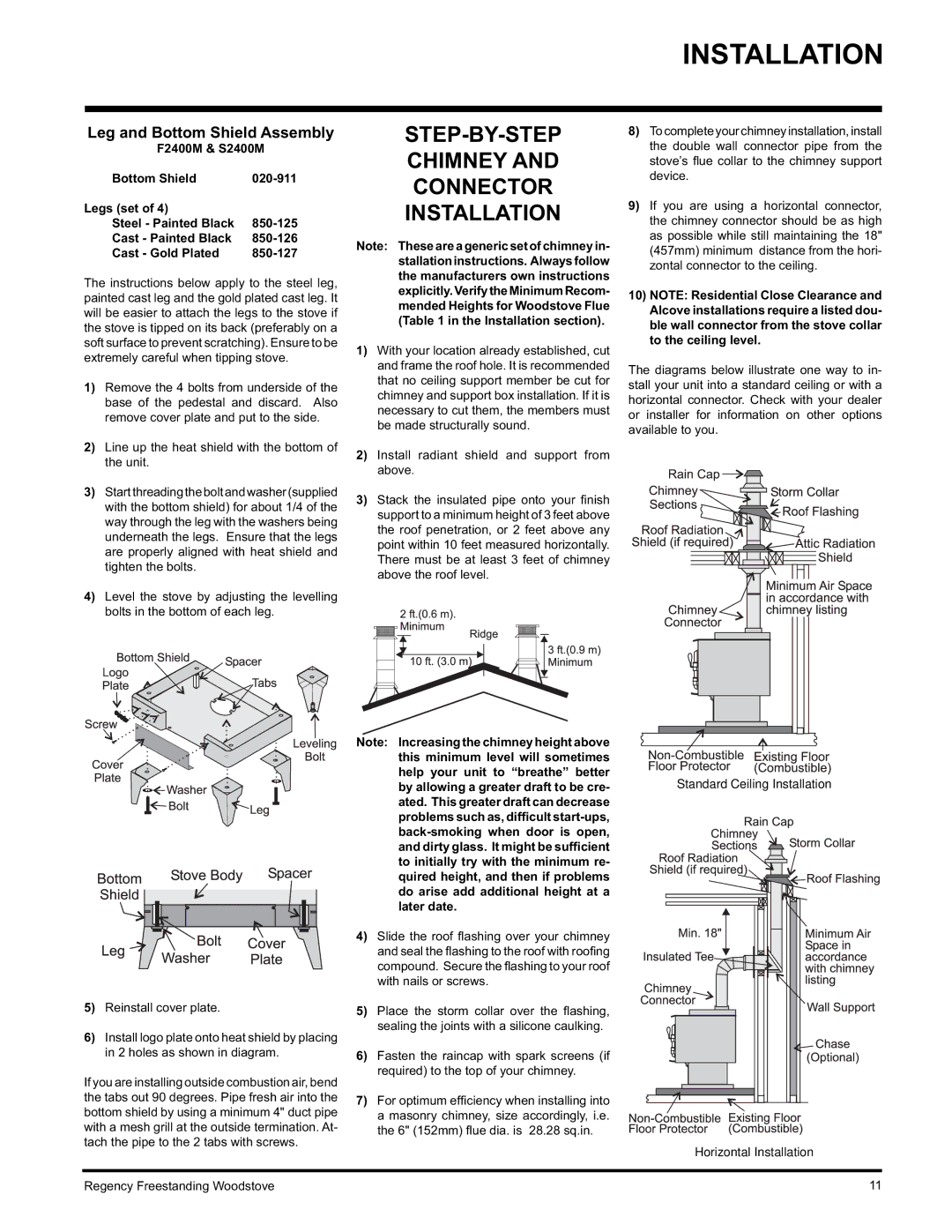F2400M, S2400M specifications
Regency Wraps has long been known for its innovative solutions in food packaging, and the F2400M and S2400M models are prime examples of this commitment to quality and efficiency. Both models are designed to meet the needs of the modern kitchen, catering to both professional chefs and home cooks alike.The F2400M model is particularly notable for its robust construction and user-friendly interface. It features a powerful motor capable of handling various wrap materials including plastic, foil, and parchment. This versatility allows users to easily transition between different types of wrapping, making it suitable for a broad range of food preparation tasks. Additionally, the F2400M incorporates an adjustable cutter that provides precise slicing, ensuring that users can create the perfect wrap every time.
On the other hand, the S2400M is designed with efficiency in mind. This model boasts a sleek design that saves counter space while maintaining a powerful performance. The S2400M is equipped with a built-in storage compartment for wrap rolls, allowing operators to keep everything organized and easily accessible. One of its standout features is the automatic cutter, which enhances safety and reduces the risk of injury during the wrapping process.
Both models utilize advanced technology to improve their functionality. The thermal sensors in the F2400M help regulate the temperature, ensuring that wraps are sealed securely without compromising food quality. Meanwhile, the S2400M’s intuitive touch controls simplify the wrapping process, making it easier for users to achieve consistent results.
In terms of characteristics, both models are designed for durability. The heavy-duty materials used in their construction ensure that they can withstand the rigors of daily use, making them ideal for busy kitchens. Furthermore, they are both energy-efficient, helping users to minimize their environmental impact while keeping their operations cost-effective.
In summary, the Regency Wraps F2400M and S2400M are exceptional tools for anyone looking to streamline their food wrapping processes. With advanced features, user-friendly designs, and robust construction, these models represent the pinnacle of modern food packaging technology. Whether you’re a professional chef or a home cook, investing in either of these models will elevate your food preparation and storage experience.

